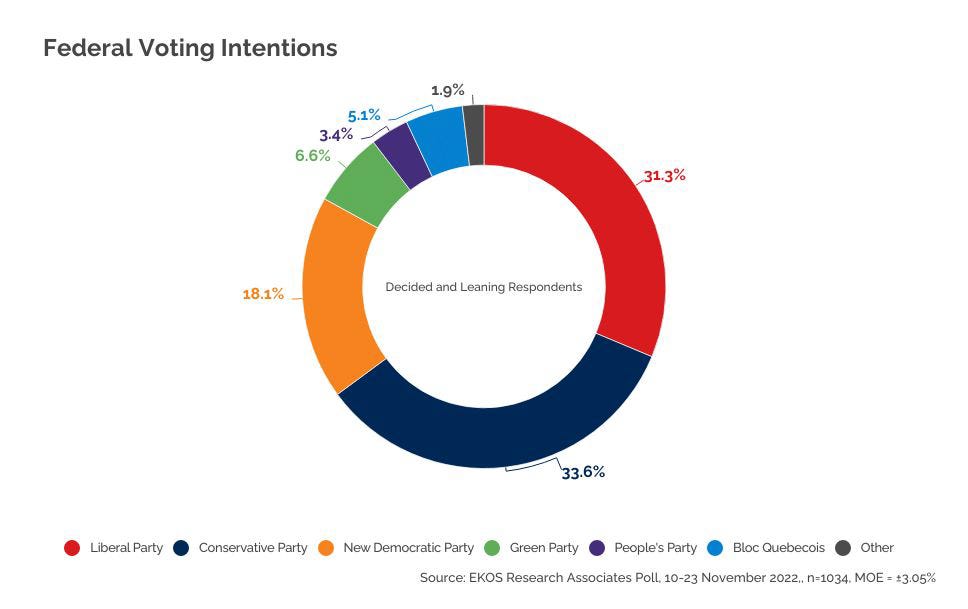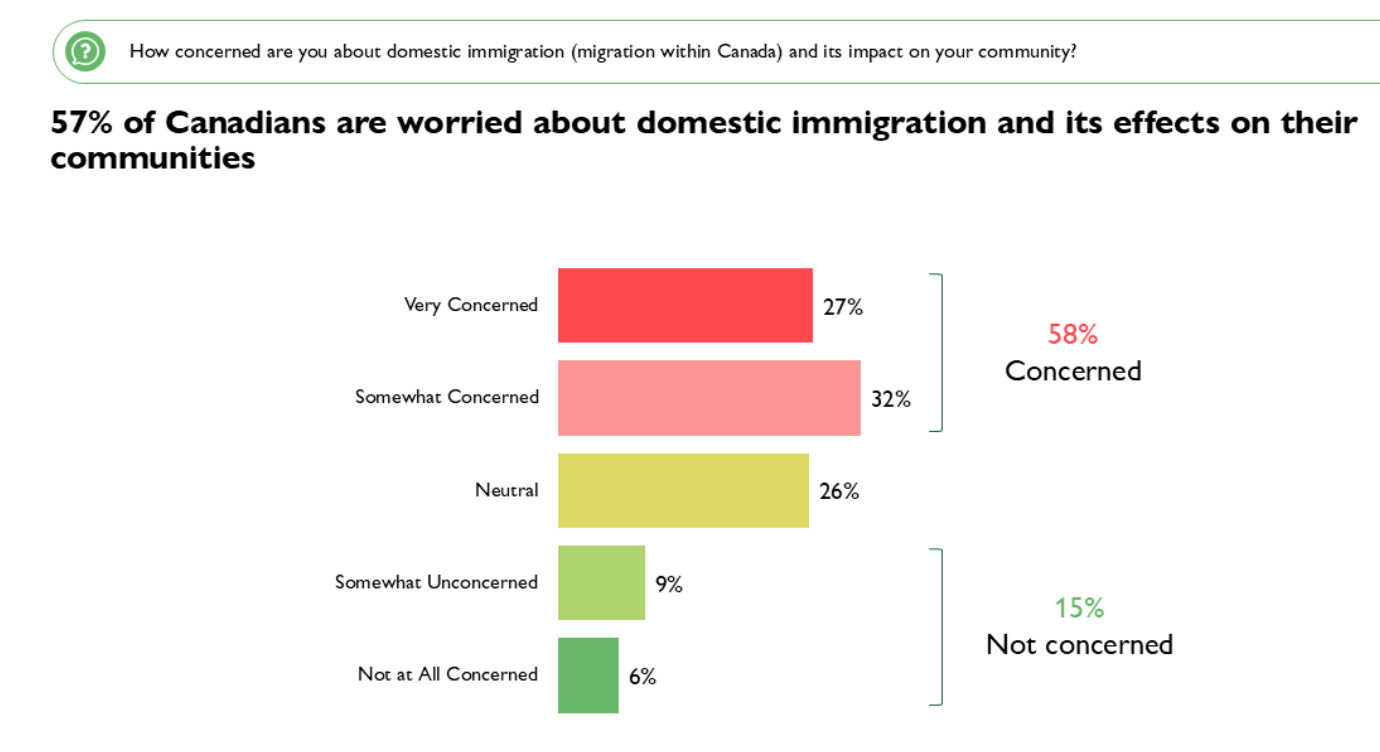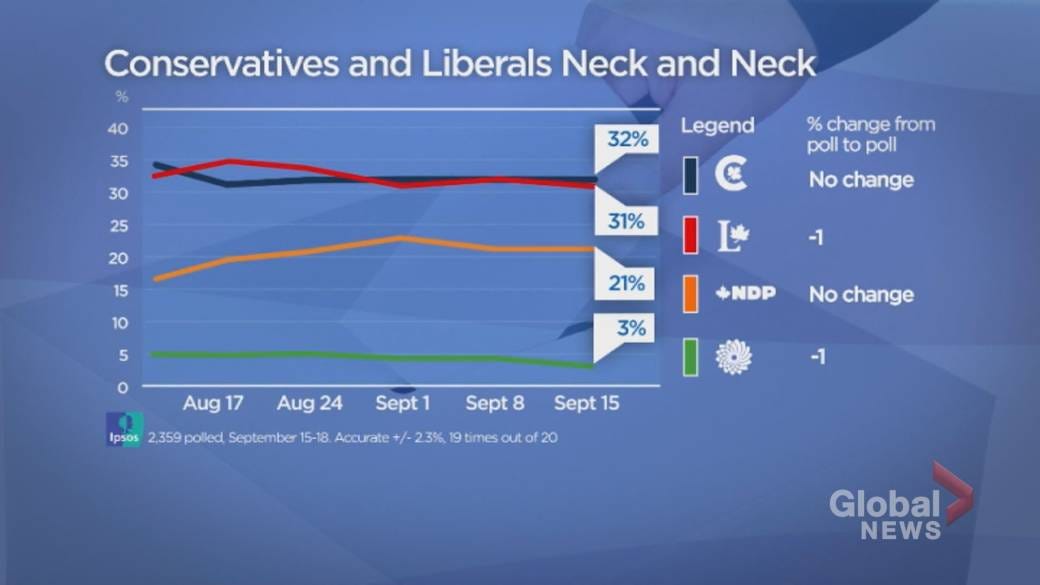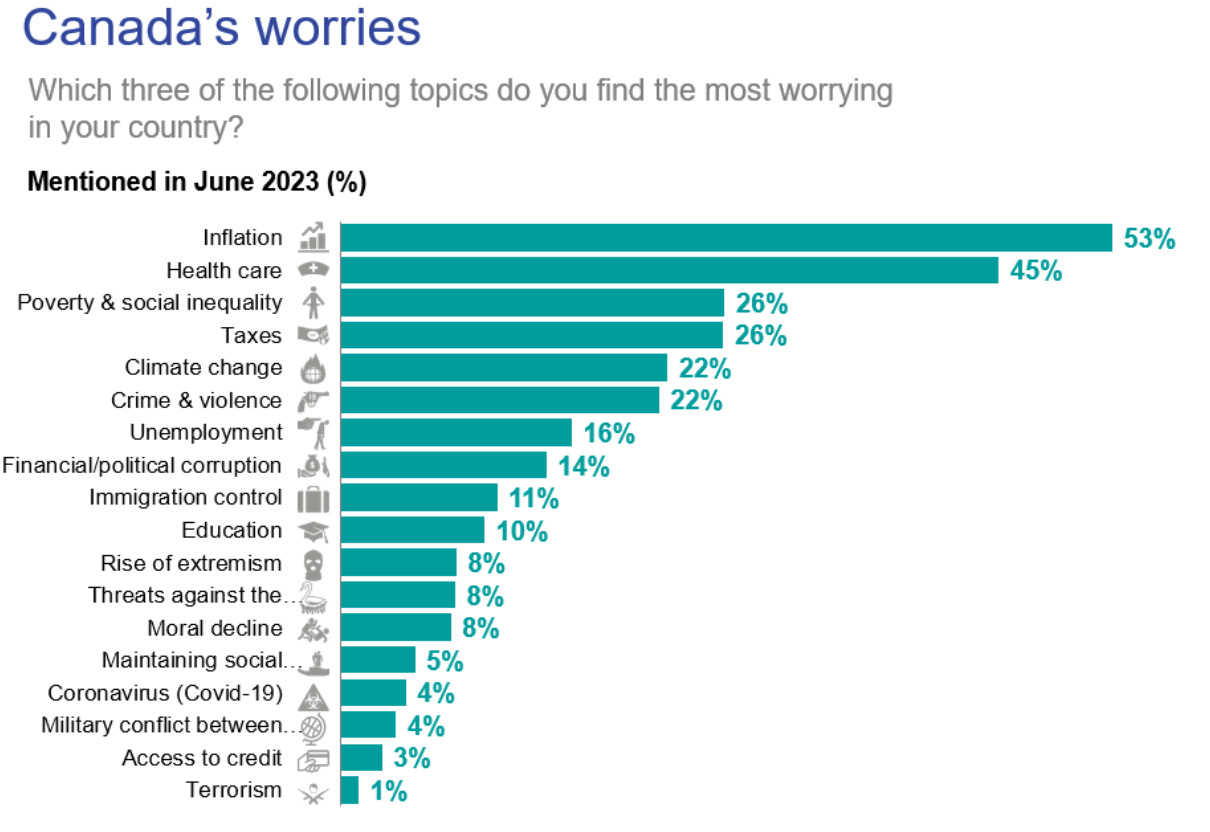What Polls Can (and Can't) Tell Us About Public Opinion
Public opinion polls are touted by pollsters as clear insights into how Canadians are thinking. But what do they actually tell us?
Public opinion polls are a key tool to understanding Canadian democracy, offering us insights into the public’s top priorities and issues — while also exposing us to the complexities and nuances that come with measuring Canadians’ thoughts and opinions.
But there are dangers to viewing polls as perfect reflections of what Canadians are thinking on any given issue.
Here, I’ll delve into what polls can (and can’t) tell us about public opinion in Canada.
What Polls Can Tell Us
1) A Snapshot of Current Public Opinion
Polls provide a great snapshot of public sentiment, showing us key trends, priorities, and thoughts Canadians have on a specific issue.
Think of Angus Reid Institute’s tracking on Canadians’ changing attitudes towards national pride.
Back in late 2024, it was reported that public pride and emotional attachment to Canada had showed historic declines since 1991.
However, a subsequent poll in Feb 2025 showed a significant surge in Canadian pride, in light of hostile U.S. threats of annexation and tariffs.
2) Differences Between Groups
Polls are also useful for highlighting differences between groups. Canada is a complex, multicultural puzzle with many different ethnicities, traditions, and dimensions. Polls are a great way of understanding differences between layers of the Canadian population, whether by age, income level, region, or gender.
A good example is Leger’s recent poll showing a more pessimistic outlook from Gen Z and Millennials about key economic issues, in contrast with older generations. Another poll by Angus Reid Institute showed glaring differences between Canadians by age and gender on issues like national pride.
3) Methods that Influence Political Strategy
Third, polls are a key element to influencing political strategy.
You may have noticed the sudden shift in tone and major rebranding from the Federal Conservatives, swapping out “Everything is Broken” for “Canada First” messaging.
You can bet that this policy shift was heavily influenced by Canadians’ shifting attitudes towards anti-American sentiment and national pride.
With other polls (Léger, Ekos, Ipsos) showing the Liberals are now a serious threat to their chances at forming government, the Conservatives have placed a new focus on combatting U.S. tariffs, increasing border security, and reducing interprovincial barriers — policy stances a far cry from their previous “Axe the tax. Build the homes. Fix the budget. Stop the crime” slogans.
4) Ways to Hold Decision-Makers Accountable
Polls are also great tools for accountability, as they provide direct feedback to policymakers and politicians on how the public is reacting to their policies, and provide us with insights on how to hold governments to account.
For example, let’s look at Abacus Data’s previous polls tracking Canadians’ changing views on immigration.
Initially, immigration was not a top issue for Canadians during the pandemic, as Canada continued to rely on immigrants to help fill labour gaps in the wake of COVID-19 economic disruptions.
But following 2022’s pro-immigration policy announcements, Abacus’s initial 2023 polling showed Canadians’ feeling “unease” about immigration levels, then feeling that immigration is “harming the nation” by 2024.
In the end, negative public opinion on their pro-immigration policies had a huge influence on the federal government’s complete U-turn on immigration, marked by a wave of anti-immigration policies announced throughout 2024.
What Polls Can’t Tell Us
It’s important to keep in mind that polls have limitations. Here are a few key things that public opinion polls can’t tell us.
1) Accurate Predictions of Future Behaviour
Polls struggle with making accurate predictions, especially when it comes to future behaviour.
It’s one thing to measure Canadians’ current opinions about an issue (eg public opinions of political party leaders), but another thing to predict what Canadians will actually do (eg which party they will vote for).
For example, opinion polls have repeatedly demonstrated Doug Ford’s historic unpopularity with Ontarians. Yet if you relied strictly on these polls to predict voting behaviours, you would’ve been stunned by Ford’s landslide election win.
If we look back to 1983, a Gallup poll overestimated then-Conservative leader Joe Clark’s support by almost 10% — based on flawed assumptions about undecided voters. Despite polling well at the start of the leadership race, in the end, Clark lost by nearly 10% to Brian Mulroney.
These cases show just how risky it is to treat polls as crystal balls or palantir, rather than indicators of changing sentiment.
2) Completely Unbiased Insights
Polls are also vulnerable to bias. Question framing, sponsorship by outside lobby groups, or media oversimplification can all compromise the insights collected from a poll.
For example, polls sponsored by media outlets can skew results by focusing on specific narratives (eg “horse-race narratives” about Liberals & Conservatives are neck-in-neck), as these types of polls help drive up readership.
As a result, polls can tend to focus on highly public issues (eg immigration, U.S. relations), at the expense of less popular (but equally important!) policy issues — like reconciliation or affordable housing.
Examples include the recent Nanos poll commissioned by CTV News and the Ipsos poll commissioned by Global News, both covering the recent Ontario provincial election.
3) Nuance and Future Uncertainties
Lastly, polls cannot fully capture nuance in Canadians’ beliefs and opinions, nor account for future uncertainty.
In general, polls cannot account for contextual factors (eg why young adults are less likely to vote CPC than those 60+) or future uncertainties (eg sudden U.S. policy shifts) that quickly reshape Canadians’ opinions and priorities.
A great example comes from Angus Reid Institute’s recent reporting on Canadian national pride.
Last Dec 2024, an Angus Reid Institute poll found that national pride was at an all time low, suggesting that “there has also been a steep decline in overall pride Canadians take in identifying as Canadian”.
Flash forward a few months, and Canadian pride and nationalism has never been higher. The 2024 poll results seem laughable now, but they underscore how polling falls short when predicting Canadians’ long-term behaviour.
Key Things to Keep in Mind When Interpreting Polls
Methodology Matters
Polls are not perfect, and can be subject to selective bias, skewed by a flawed methodology, or improperly influenced by external groups with agendas.
To judge the quality of a poll, you need to look at the 3 things that make a great public opinion poll:
a quality sample that accurately represents the target population;
a clear, objective, and easy-to-understand questionnaire, and;
a mode of interview that effectively connects the sample with the questionnaire.
Be Critical
Not all polls are created equally. In order to assess their quality, here are some questions you can ask:
Does the sample size accurately reflect the target population? What groups or demographics are (and are not) included in the sample? (You can use this tool to help answer that question)
Is the questionnaire asking clear, easy-to-understand questions, or are they leading and subjective? Do any of the questions drive certain narratives? What questions were not included, and why?
What mode of interview do they use to poll participants? Issue polling? A market research survey? An election poll? How does this method influence the poll’s results, and what does it not capture?
Look for Hidden Biases
These types of questions will help you better understand the limitations and potential biases in a poll.
Keep in mind to look for certain sponsors or external groups connected to the poll, so you can better understand who may be driving agendas that could bias the polling results.
For example, a 2023 Ipsos’ poll showed that 62% of Canadians believe the country is “on the wrong track”, but provides no context. What issues are driving these feelings? Housing? Cost of living? Healthcare?
Without designing the questionnaire to address important context, you’ll find polling results often fall short.
Polling is One Tool (of Many)
Ultimately, polls are not final verdicts on public opinion, but rather tools for dialogue.
Like a snapshot, they can show how Canadians’ think at a moment in time, but remember that issues are constantly in flux, and that change continually shifts opinions, priorities, and beliefs.
Polling is a tool you can use to critically engage with public opinion, and it can provide some great insight into what issues are trending.
We face serious issues ahead, including impending U.S. tariffs, record heat waves, an ongoing housing crisis, and an increasingly hostile neighbour to the South — and we’ll need every tool and resource to effectively address them.
Polls remain an essential tool we can use to track these issues, but need to be interpreted carefully.















